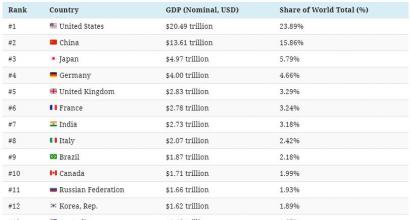Kuindzhi. Elbrus evening
Guess about Kuindzhi:
The powerful, original character of Arkhip Ivanovich, shrouded in a halo of artistic genius, deprived of unforgettable traces in the memory of everyone with whom he came close life's path. Among the impersonal manifestations of this rich life, two characteristic episodes were especially deeply imprinted on my memory, like Kuindzhi’s painting, as an artist-teacher, and Kuindzhi, as saving his artistic belongings. In 1898, my friend and I prepared our paintings before the “Spring Exhibition” at the Academy of Mysteries. Having met Arkhip Ivanovich at the Academy, I asked him to come to our apartment and marvel at our robots. The next day, close to noon, in the corridor that led to our room, we felt familiar peaceful creatures. I rushed to the door. Arkhip Ivanovich stood in front of us in his black overcoat with a beaver cloak and in a crafty hat.
"Monthly Night on the Dnieper":
In the early spring of 1880, near the break with the Peredvizhniki, A.I. Kuindzhi worked on a new picture. The Russian capital was filled with sentiments about the enchanting beauty of “Monthly Night on the Dnieper.” For two years a week, they opened the doors of their workshop to everyone, and the St. Petersburg public began to take part in the work long before the completion of the work. This picture has achieved legendary fame. I.S.Turgenev and Y.Polonsky, I.Kramsky and P.Chistyakov, D.I.Mendelev came to the mastermind of A.I.Kuindzhi, and the expert and collector K.T.Soldatenkov visited the painting. Directly from the master, even before the exhibition, “Monthly Night on the Dnieper” was bought by Grand Duke Kostyantin Kostyantinovich for a great price.
Mission Kuindzhi in Russian mysticism:
For Russian painting there was a need for the appearance of its Monet - such an artist who would so clearly understand the facts of the farb, so deeply delve into their essence, so ardently and passionately express them, which other Russian artists believe if only they would stop putting it up to the palette like a hardly needed appendage. Farbi in Russian painting, from the hours of Kiprensky and Venetsianov, ceased to play an independent, significant role. Before them, the artists themselves were dressed like a kind of official suit, without any kind of obscene appearance in front of the public.
Elbrus
In 1890, Kuindzhi's sons traveled to the Caucasus and literally fell ill in the mountains. Numerous views of Elbrus - such as "Elbrus in the day" (on the next page) and "Elbrus in the evening" - were formed into an impressionistic series in order to depict the smallest changes in the illumination and development of nature. In the skin of these works, Kuindzhi has different techniques and shows different advantages - so, in the first of the views of landscapes, wines are more occupied with the behavior of the swollen middle, which enters the dark Serpanka Girskaya peak, and in another - experimenting with color, making Elbrus literally phosphorescent in the changes Sunset sun. Sontsya. However, the non-impressionistic method plays the first violin in these works - it is the new role that has been assigned and serves the highest priority: the creation of an ideally grand image of earthly nature, included in the harmony of all everyday life. The top of Elbrus near Kuindzhi is invisible from the sky, it immediately appears behind it, connecting the earth and the heavenly heights. It seems that the “Girsky” lessons of the master of good achievements M. Roerich are about to begin in the New Year.
09.05.2015
Description of the painting by Arkhip Kuindzhi “Elbrus Ceremony”
It is important to confuse Kuindzhi’s work with other paintings. This is due to the fact that they have a distinctive style, a smoothness of images. The regions have always been the most beautiful. The artist wrote a number of cycles, all with the same theme. There are a whole series of paintings dedicated to the great Elbrus. Expressionist Kuindzhi has the power to depict nature in a special way, at any time. In the new bedroom We are known as an artist Claude Monet. 1890 r. The author is going to the Caucasus. Yogo was struck by the majesty of the mountains. In order to convey the primary beauty, he had to transform himself, having acquired new techniques, and refined his leaf technique.
Painting aims to show the greatness of nature, its ability, but, every time, it does not achieve the harmony that binds itself to everything living and non-living.
The top of Elbrus almost props up the sky, linking the mountain and the expanse of the sky. This approach was noted by the students of Kuindzhi, by Mikola Roerich himself. If you marvel at the creativity of this artist, you can see many parallels. The sun is approaching before sunset and the top of the Caucasus Mountains is shining in its wake. It seems that Elbrus itself has started to burn: everything is burning, it’s burning. And it’s cold at the bottom of the mountain, the artist paints it with cold shades. The sky turns greenish-orange, the gloom that floats across the sky, with shades of beech color, pierced by erysipelas. Such contrasts are not uncommon in Kuindzhi. The sun, which has ended, at the last moment rises to cast its light, appears on the tops of the mountains, and is visible on the hills that have scattered behind the foreground. The exchanges gradually fade away. The earth becomes dark, and these places, where change has not yet begun to flow, stink, shine, making the sky scorching.


